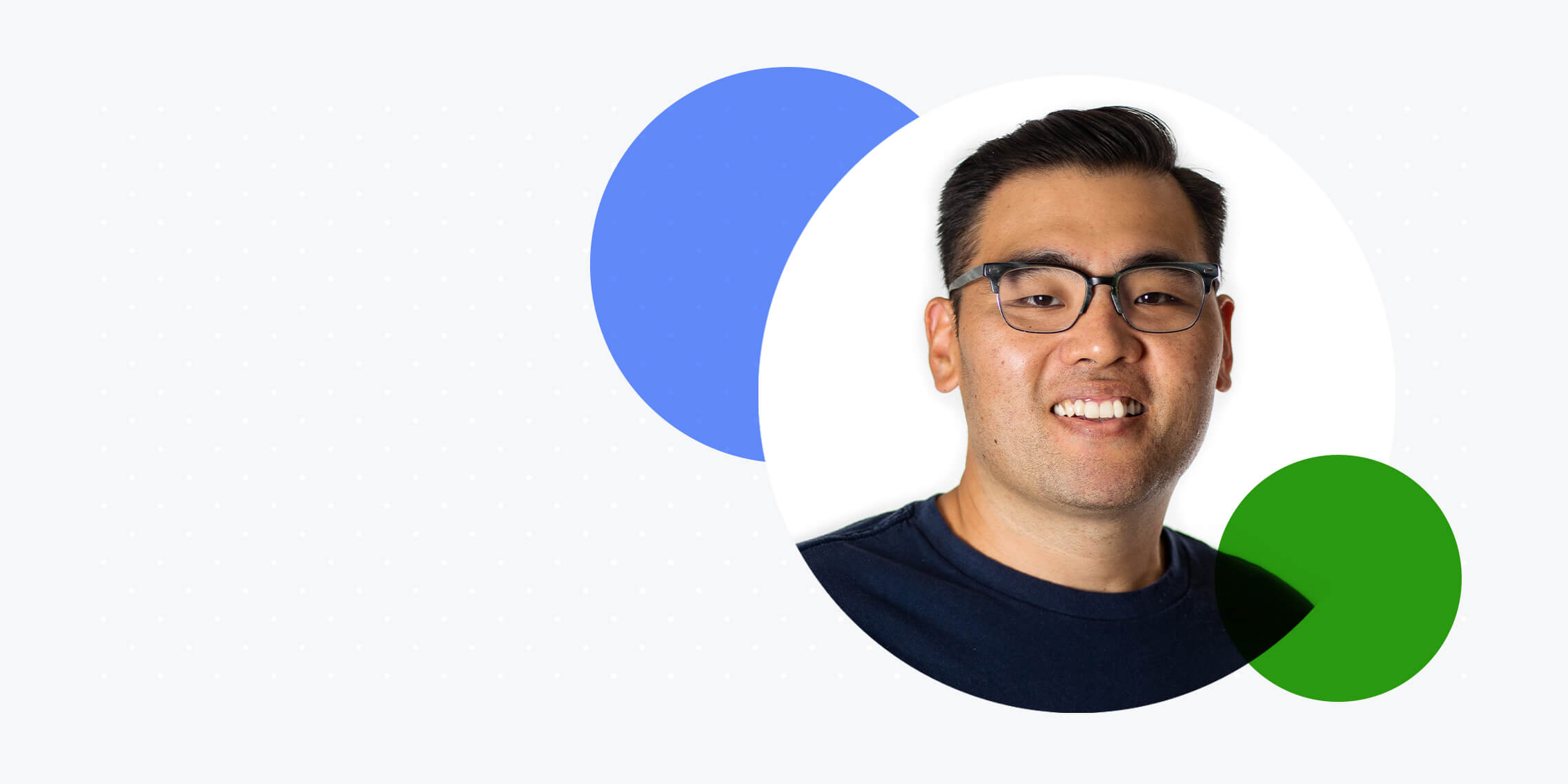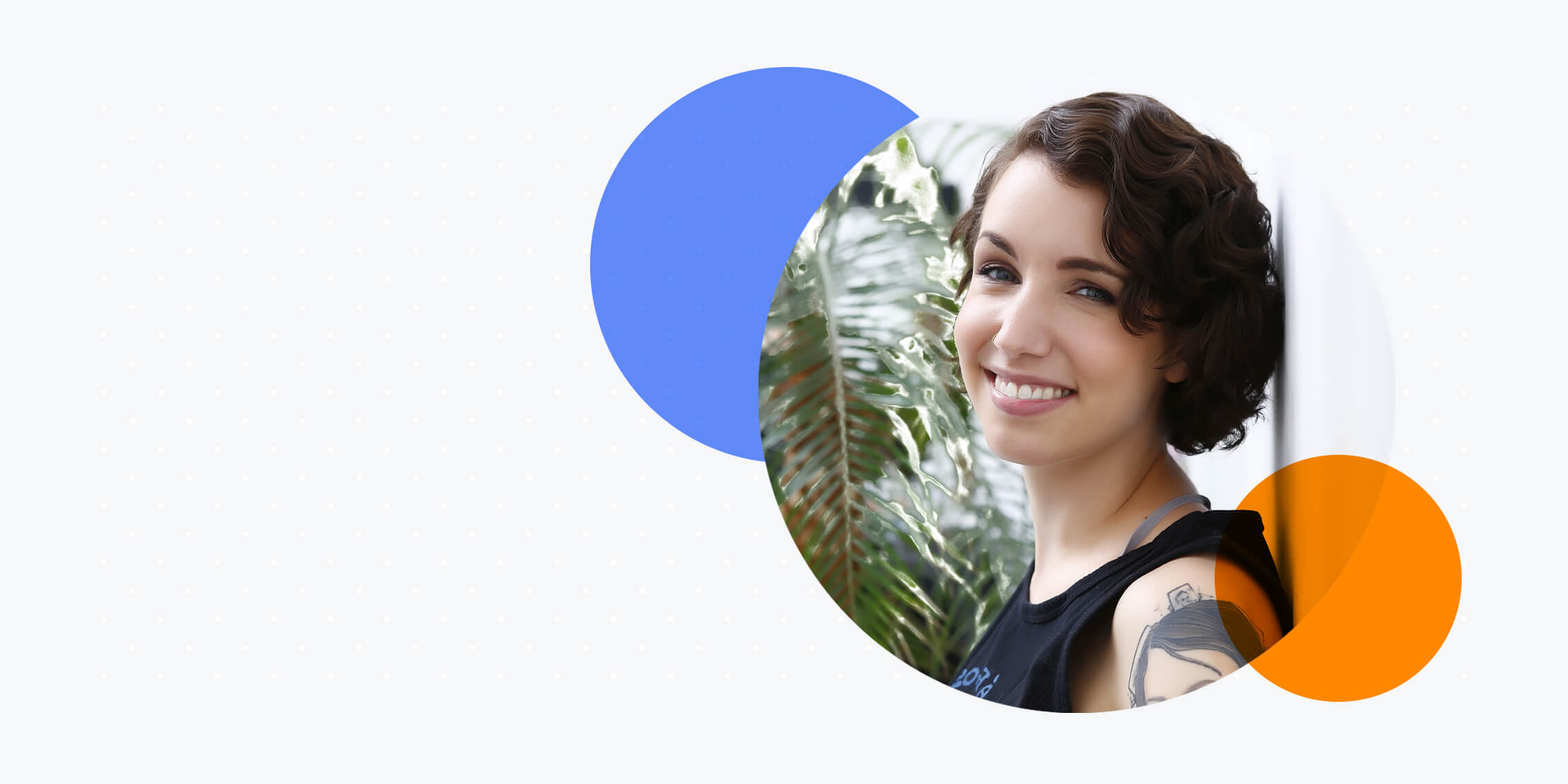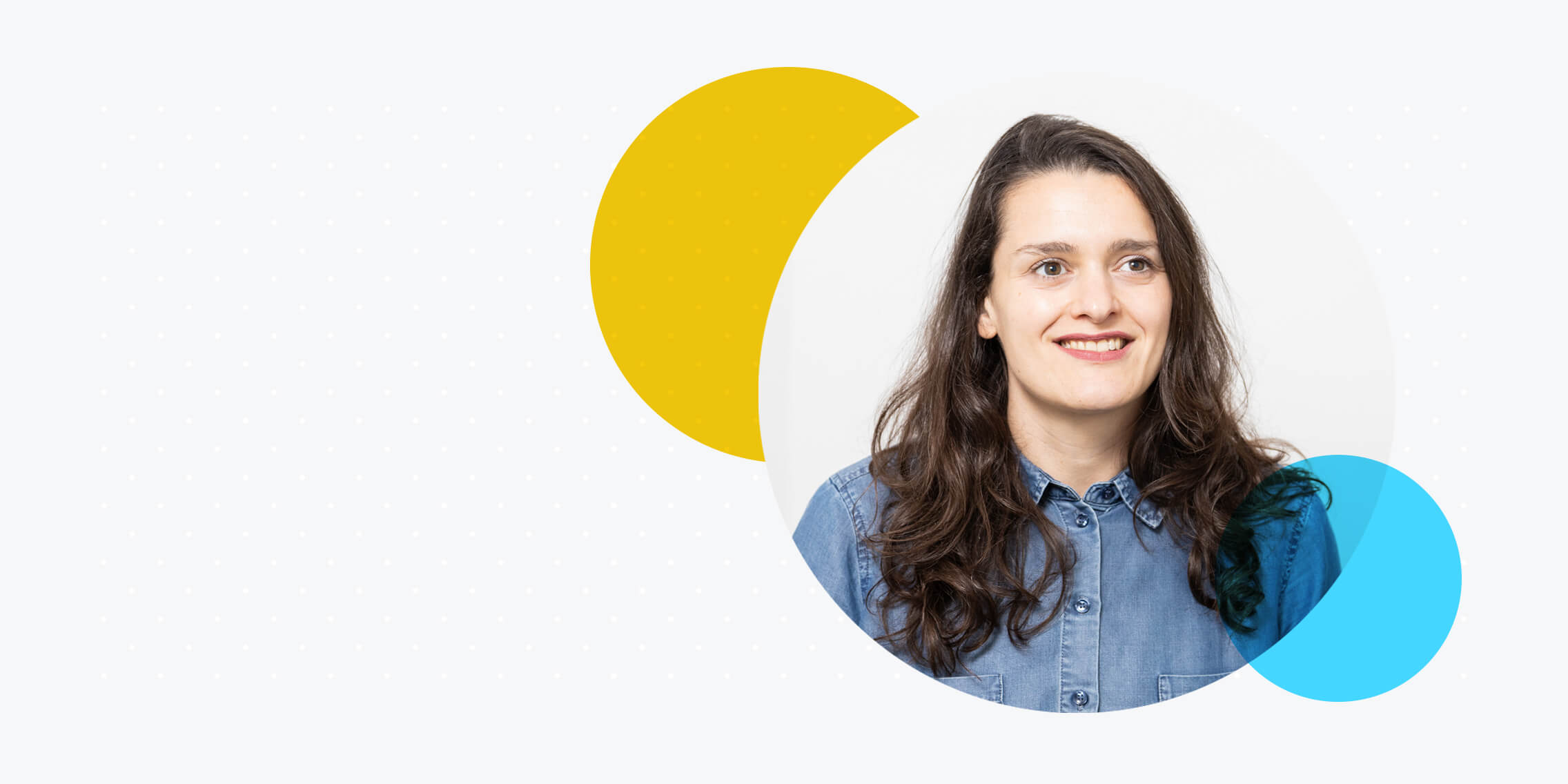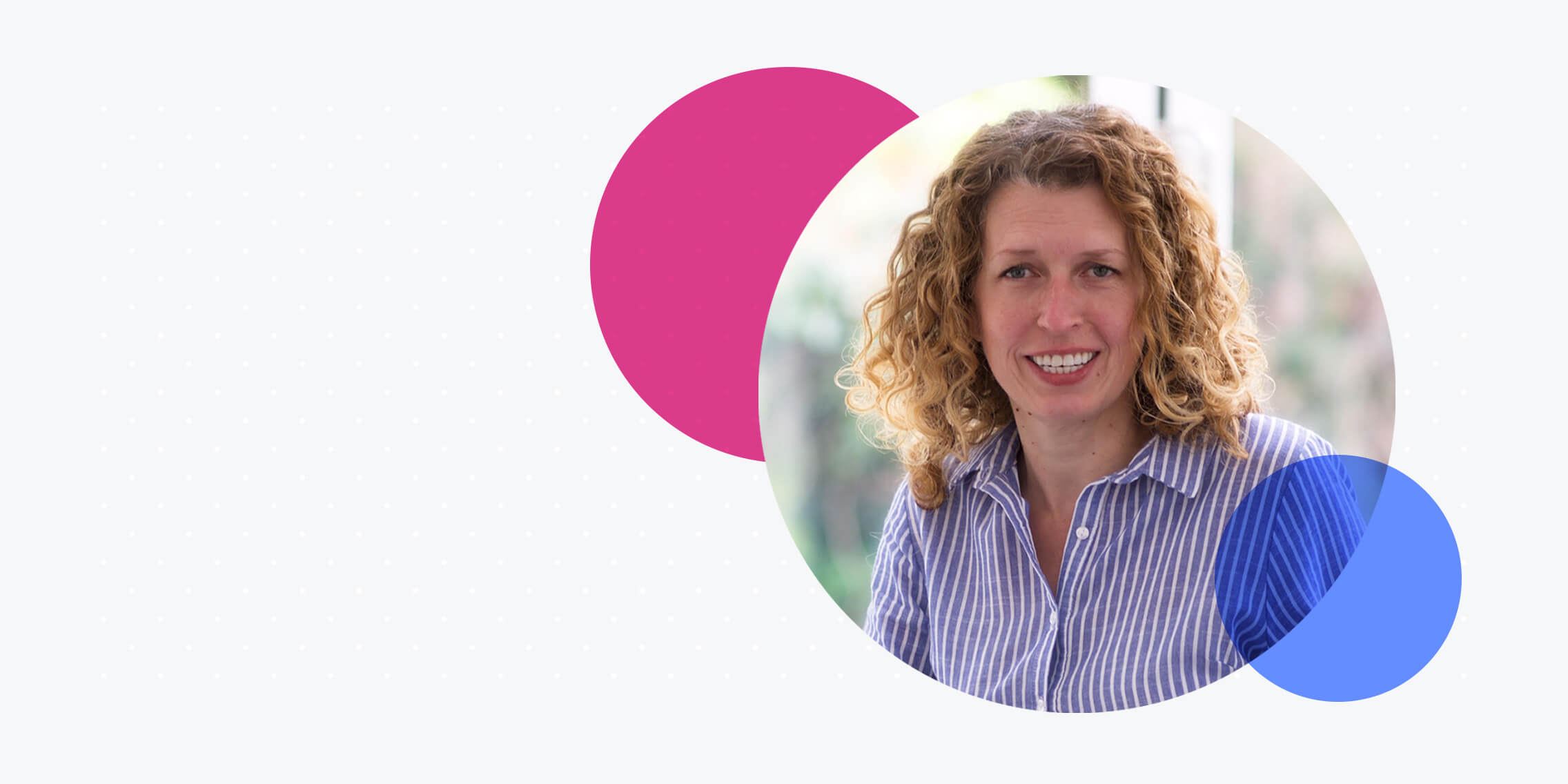Before learning UX design, Simon felt unfulfilled in his marketing career.
He wanted a more creative role where he could help solve problems for people and UX seemed like a natural fit.
He told us how our Professional Diploma in UX Design helped him to evolve in his role and take on new responsibilities.
What interested you about UX?
I liked that UX had a clear process and a problem-solving aspect – it was an amalgamation of what I enjoyed in my previous jobs.
I used to work as a consultant at HubSpot where I mapped out processes to help customers achieve their goals. Before that, I worked on their support team.
I really enjoy solving problems for people and finding out what’s broken.
I love process and problem-solving, but they can feel a little routine without creativity.
I was thinking about studying architecture as a teenager, so I asked an older architect friend what it entails. She said architects consider small things that make a big difference, explaining “think about hand dryers. You can’t put them so high that the water drips down your arm. You can’t put it so low that you have to bend over and you can strain your back. You have to put it on a level so that it’s accessible for most people and easy to use.”
I’ll always remember this little example. You don’t have to design a pretty bathroom but you have to creatively design around its functionality so that it’s easy to use. I feel like a UX designer is an architect from a software perspective.
Once that clicked, I knew I would like UX design.
Why did you choose the UX Design Institute?
Cost was a big drawing factor. There are these 12-week bootcamp style courses out there in the $6,000 – $7,000 range. I felt like this was a lot of money to ask.
If I picked one of these intensive bootcamps, I would have to give up my job. I didn’t have the financial resources to do something like that.
Both of my kids were under the age of three when I was choosing UX courses. I had conversations with my wife, discussing if two nights a week (after my kids went to sleep) if I could spend that time working on the course. This Professional Diploma fit that time slot that worked for us as a family.
What was the course content like?
I really enjoyed it. It turned complex ideas into digestible chunks of content – that was really helpful.
I thought all of the projects were enjoyable, especially usability testing and affinity diagramming. I love the whole idea of just sitting down with the user.
For affinity diagrams, the actual process of gleaning insights, putting them onto Post-its, clustering them and creating cohesive groups together was really fun. I loved discussing the research and seeing that I wasn’t the only one recognising certain trends or patterns.
I also thought it was really helpful how the UX Design Institute shares templates and scripting for usability testing.
What was the biggest challenge of the course?
Motivation was my biggest challenge. I looked at the Professional Diploma like a marathon. The course is only six months, but it’s six months ingrained into your life and everything that you do.
Studying in the evening after work reminded me of that expression “getting to the gym is half the battle”. The work itself wasn’t a challenge, but sometimes getting to a place where I was mentally ready to work on the course was. Perhaps Covid-19 had a part to play in that!
Once I got to my desk and did the work, I got lost in the video lessons. I think that’s a sign that I really enjoyed the course and UX design.
Has the Professional Diploma helped you to break into UX?
My manager wanted me to succeed in UX. When I told her I had signed up for the course, she created a career path for me to become a UX designer at our company.
She knew that I wouldn’t be on her team forever, but didn’t want to lose me to another company either. My manager told me “we still value you as a critical part of our team and would like you to pursue a path you’re really passionate about.”
I now have a career development plan where I commit 1-2 hours per week in my 9-5 job to UX design.
My company doesn’t currently have an in-house UX designer, but we work with a third party UX design consultancy team. I’m sitting in on those calls with product managers, observing how they approach design solutions.
Can you describe your current role?
I currently work as marketing operations administrator for Gordian. My responsibilities include a lot of process and project management. I solve operational problems. I always have the itch to solve, solve, solve.
I help set up processes in our CRM and email to help deliver these goals within the company. I streamline processes for our sales reps, because marketing and sales work so closely together here.
I engage with the sales team and ask them what changes are helpful and what’s not. I tell them about parts of the processes we’re looking to tweak and ask what their pain points are so I can gather their feedback.
How did our course help you in your job?
I feel the course is like a toolbelt and at any given point I could use a tool from it and apply it to my job.
I have more of a UX voice now. The course taught me a lot about stakeholder management. I’m seeing the importance of stakeholder interviews, user interviews and making business cases. I’m trying to get a balance between making the product good for the business and for the user.
My coursework has helped me understand what the UX design consultants are doing. When they’re talking about components or cloning components, I understand what they’re talking about because I did prototyping and wireframing in the course. Seeing how they use the tools has helped me learn too.
Were there any transferable skills from marketing to UX?
Absolutely, the two are closely aligned. I’m layering in UX skills into my day-to-day. My manager wants me to leverage the skills I’ve learnt in the course in my marketing projects.
UX design has opened my eyes to who my customers are in my company.
I think of marketing and sales as my customers, as they experience the processes that I’ve created. I’ve used my UX skills to improve external customers’ experiences too. For example, we realised that the buttons and copy on one of our emails was accidentally making external customers click ‘keep hearing from us’ rather than unsubscribe on the landing page in one of our marketing emails.
That unsubscribe page looks outdated and doesn’t match what people expect of the brand now. Its redesign is now on the roadmap, in line with company standards to help users to unsubscribe if they want to.
What’s your favourite thing about working in UX?
My favourite thing about working in UX is that I get to leverage problem solving skills in creative ways.
What works for one audience in one place may not work for another audience in another. I love that solutions are tailored to specific problems, which serves as a platform for creativity for me.
Would you recommend this course? To who?
I think this course is perfect if you’re looking to learn and transition into a new career. The course felt very structured, plus I liked having the accountability of the project work and the exam too.
The Professional Diploma in UX Design is great for people who just want to explore UX design as a career and for those who want to get started in it. I would also recommend it for people like me, who know that UX design is where they want to go, but they have time constraints.
What advice would you give to someone considering the course?
My main piece of advice is to not be afraid to ask your employer to support your career development.
I was initially worried that the course was a little disconnected from my current role but my employers were nothing but supportive when I told them. I went rogue into this. I didn’t consult my manager at work, and didn’t tell them it was something I was thinking about as a potential career change or development path.
Ask your employer to support you if you have a team that empowers you and your career choices. Many companies have tuition assistance for things that are related to your role. Involve your employers in the process. Now that my manager knows where I want to go, she’s providing me with opportunities to get there.




